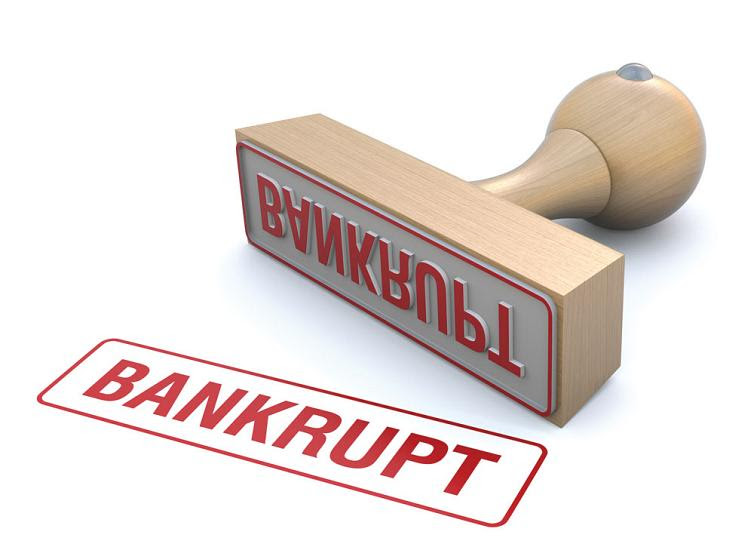A Lesson In Insolvency

Many different types of insolvency proceedings exist, including receivership, protection under the Companies’ Creditors Arrangement Act (CCAA), and bankruptcy. But, what are they and how are they different?
According to Jeffrey Carhart, partner at the law firm Miller Thomson, perhaps the simplest way to understand the differences is to think about who is “in control” of the insolvent company.
“Generally speaking, the Companies’ Creditors Arrangement Act (CCAA) is the Canadian equivalent of Chapter 11 in the United States. It is a system where the debtor itself can remain in control of its affairs under the supervision of the court and with the benefit of a stay of proceedings,” said Carhart.
However, a unique feature of the Canadian system is that a monitor provides supervision.
“With both receiverships and bankruptcy, the control of the insolvent company has been turned over to a third party, either a receiver, in the case of a receivership, or a trustee in bankruptcy, in the case of a bankruptcy,” said Carhart.
There also is private receivership, in which a receiver is appointed under security. However, today most receivership is processed through the courts. According to Carhart, it’s common for many people and corporations to eventually have to deal with insolvency.
Insolvency Is Commonplace
“I have always said that no matter how perfect you may be as a company, it is almost impossible to avoid being affected by the insolvency process at some stage or another. In my experience, even the strongest companies will, for example, encounter a situation where one of their customers or one of their suppliers gets into trouble,” said Carhart.
So how can a supplier respond to a customer that is going through insolvency?
“Whenever possible a supplier should take security in unpaid inventory or equipment that the supplier is providing to a customer,” he said. “There are rules under the Personal Property Security Act legislation that allow a supplier to take such security relatively easily, and on that basis, ‘slot into first place’ in terms of the specific inventory that it has provided.”
Once a supplier or customer has slipped into some kind of formal insolvency, moving forward gets more difficult, but there still may be some positive-outcome scenarios.
For example, under the CCAA it may be possible that the debtor will designate a supplier as being a “critical supplier” and that may pave the way to getting prefiling accounts receivable paid. However, according to Carhart, being designated as a critical supplier is relatively rare.
“It is also very important to stay on top of these situations,” added Carhart. “Most CCAA proceedings are really based around a sale process. In other words, what tends to happen in most of these cases is that the business will get sold rather than reorganized. In those situations, the debtor may try to assign your supply contract and it is very important to stay on top of that process and to assert your rights. Otherwise the contract may get assigned with or without your consent or participation in the process.”
Canada also has a remedy that allows unpaid suppliers to try to recover what are called 30-day goods in a receivership or a bankruptcy situation, but not in a CCAA situation.
Can any positive opportunities arise from the insolvency process?
In Carhart’s experience, many businesses now change hands through the insolvency process. You see this happening on a massive scale with large, international companies, but it also happens constantly to companies that are not household names.
“Canadian business-people should be alert to the possibility of acquiring the business of an insolvent competitor or just acquiring some market share generally through the insolvency process,” said Carhart. “But they also need to understand the process. It is not the same as buying assets from a solvent company.”
For example, when buying from an insolvent business you buy the assets “as is/where is,” and you will not be able to get long lists of representations and warranties.
Fast-paced business
“These can be fast-moving transactions, but I have seen many businesses succeed after being transitioned in this way,” said Carhart. “It is just critical to understand the process and to negotiate an agreement appropriately. Usually it will be a competitive process in which the receiver, trustee, or the company in CCAA is going to be evaluating multiple offers at the same time.”
This means it is important to understand how to make your offer look the best while at the same time not giving away something that is critical for your protection.
“Companies that are in insolvency usually got there for a reason, and it is very important when you’re looking at investing in the acquisition of such a company that you understand what the problem is and that your offer to purchase or to invest is structured in a way that you do not get drawn into the problem,” said Carhart.
It also is critical to carry out due diligence on all aspects of the business. For example, in the last few years a lot of surprising court decisions have arisen relating to employees and labour.
“Some of those decisions have related to pension liabilities, and obviously there are tremendous strains all over the world right now on both private and public pension plans. The bottom line is that if you need to take on the employees to make the business successful, it is vital to understand exactly what is and is not owing to the employees and how those arrangements can be moved over to a new go forward entity,” said Carhart.
The lesson to learn is this: Understand and stay on top of the bankruptcy process to avoid being hurt by it.
Mark Borkowski is president of Mercantile Mergers & Acquisitions Corporation. Mercantile is a mid market mergers & acquisitions brokerage firm in Toronto. more



